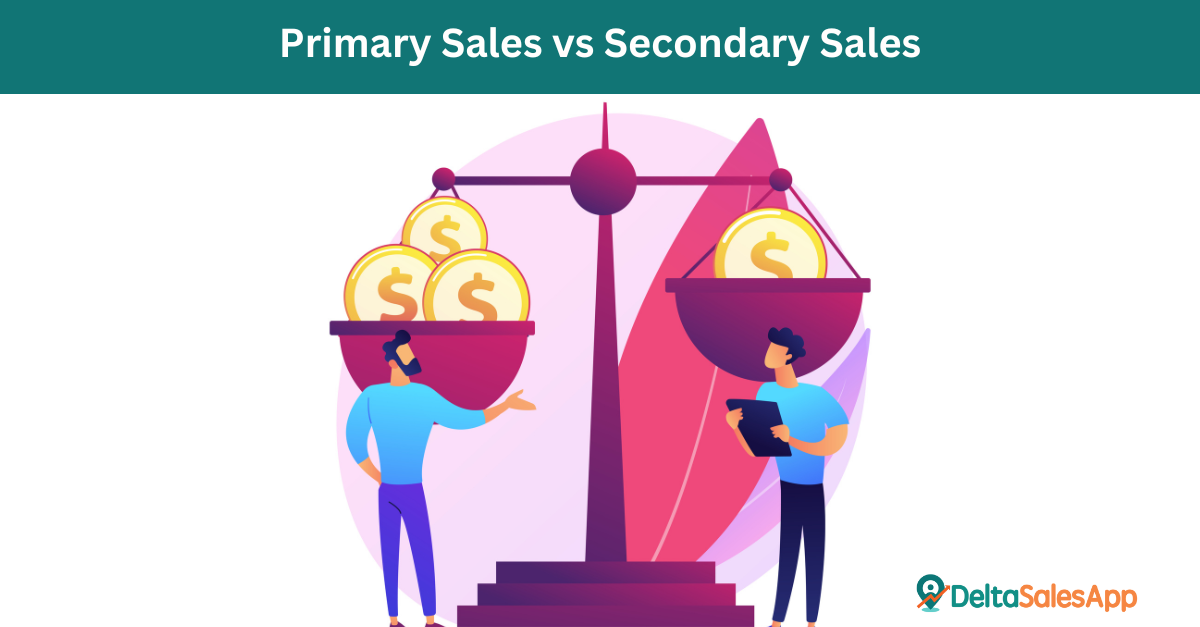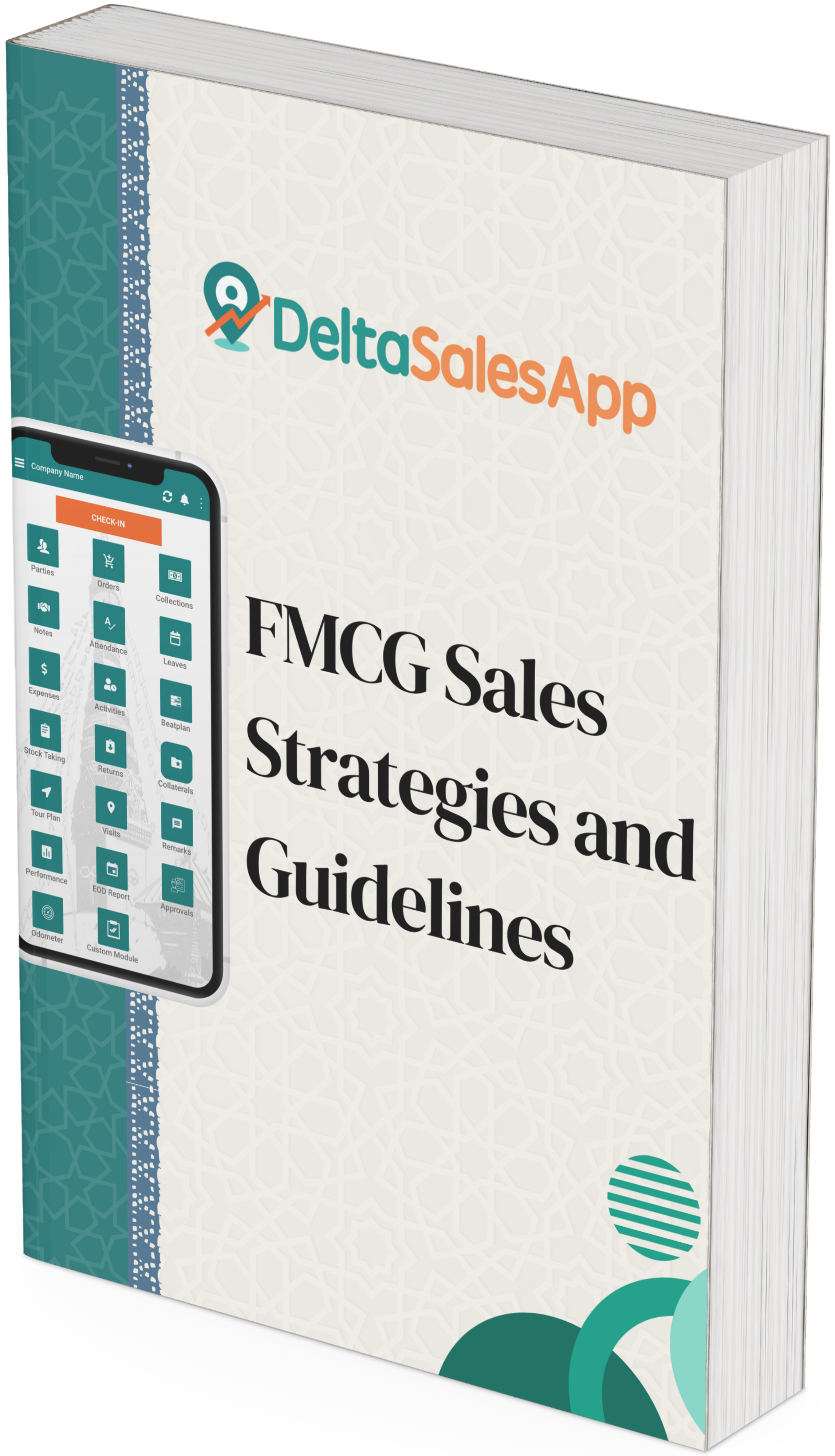Primary Sales vs Secondary Sales

In the world ofConsumer Packaged Goods (CPG), primary sales and secondary sales are the two essential pillars that drive business growth. However, while both are vital to the success of a brand, their impact differs, and they each serve different purposes within the supply chain.
Over the years, there has been a shift in how businesses view these two types of sales, but the question remains— Which one matters more for growth? Let’s dive deeper into these concepts and understand their role in a comprehensive sales strategy.
Understanding Primary Sales: The Backbone of Distribution
Primary sales are the first sale transaction that happens when a manufacturer sells its products to distributors, wholesalers, or retailers. This step serves as the starting point of the product’s journey from the manufacturer to the end consumer.
Why Primary Sales Matter?
Primary sales are crucial for several reasons:
- Ensuring Product Availability: Primary sales ensure that products are available at the distributor and wholesale level. If a brand can’t ensure primary sales, there’s a risk of stockouts, which can ultimately affect consumer demand and lead to missed opportunities.
- Inventory and Supply Chain Planning: Primary sales are the driving force behind production and inventory planning. The manufacturer needs to forecast demand and allocate resources accordingly. Primary sales help determine how much inventory needs to be produced and shipped.
- Cash Flow for Manufacturers: Since primary sales involve the direct exchange between manufacturers and distributors, this is also a key source of cash flow for companies. A robust primary sales strategy ensures that money is flowing into the business, which is vital for sustaining operations and funding further growth.
Example of Primary Sales in Action
Consider a well-known beverage manufacturer. When the company produces its drinks, it sells these products in bulk to distributors. The distributors then carry out the task of pushing the product to the retail level. The primary sale here is the transaction between the manufacturer and the distributor, ensuring that the product is in stock at the distribution center and ready for further sale.
Importance of Secondary Sales: Tracking Retail Performance
While primary sales set the stage, secondary sales are what allow a business to gauge its true market performance. Secondary sales are the sales made by distributors or wholesalers to retailers. These sales serve as an indicator of how well products are moving at the retail level, providing valuable insights into consumer behavior.
Why Secondary Sales Matter?
Secondary sales are equally, if not more, important than primary sales because they provide direct insight into consumer demand and how well a product is resonating in the market.
- Retail Performance: Secondary sales help manufacturers understand which products are performing well in retail outlets and which are not. This provides an opportunity for businesses to adjust pricing, promotions, or marketing strategies based on actual consumer feedback.
- Demand Forecasting and Stock Availability: By tracking secondary sales, businesses can forecast future demand more accurately. If a retailer is consistently selling out of a particular product, the manufacturer can take proactive steps to replenish stock. Conversely, if products are sitting unsold on shelves, the company can reevaluate its distribution or promotional strategies.
- Promotion and Marketing Optimization: Secondary sales data allows businesses to evaluate the effectiveness of marketing campaigns and promotions. If a product's secondary sales spike after a promotion, it indicates that the marketing efforts were successful.
Example of Secondary Sales in Action
Let’s look at a popular FMCG brand, like Nescafé. After the distributor stocks retail shelves with Nescafé products, the next step is to monitor how the product sells in stores. Secondary sales data tells Nescafé if their product is a top-seller in certain regions, helping them decide whether to expand retail presence, launch new promotions, or tweak the product itself to increase sales.

Primary Sales and Secondary Sales: Key Differences
While primary and secondary sales are related, they serve very different purposes. Let’s take a look at how they compare:
Aspect | Primary Sales | Secondary Sales |
Definition | Sales from manufacturers to distributors/wholesalers. | Sales from distributors to retailers. |
Focus | Inventory at the distributor level. | Inventory at the retailer level. |
Objective | To stock products at the distribution level. | To track product performance at the retail level. |
Impact | Affects supply chain and production planning. | Provides real-time consumer demand insights. |
Role in Sales Strategy | Ensures product availability for the next stage of the supply chain. | Provides data for marketing, promotions, and stock replenishment decisions. |
Technology Use | Basic tracking and inventory management systems. | Advanced tools for tracking sales, performance, and analytics. |
Frequency of Transactions | Occurs regularly at the start of the supply chain. | Continuous monitoring and reporting at retail outlets. |
Evolving Role of Technology in Sales Tracking
In the age of data, relying on manual methods or outdated systems to track sales is no longer enough. Both primary and secondary sales require real-time tracking, analysis, and reporting to ensure efficiency and make informed decisions.
Delta Sales App is designed to provide businesses with an intelligent, automated solution for managing both primary and secondary sales seamlessly. The app provides a host of features that help businesses track performance, optimize their supply chain, and ultimately boost sales.
Key Features of Delta Sales App:
- Real-Time Sales Data: Whether it’s tracking the sales made from manufacturers to distributors (primary) or from distributors to retailers (secondary), Delta Sales App provides real-time data to ensure that you have accurate insights at all times.
- Advanced Analytics and Forecasting: The app provides advanced data analytics to help you track sales trends, identify gaps in inventory, and forecast future demand based on current sales data.
- Field Force Automation: Equip your sales team with tools that help them track secondary sales directly at the retail level, reducing the chances of stockouts and optimizing product placements in-store.
- Retailer and Distributor Insights: The app helps you understand the sales performance at both the retailer and distributor level. This provides a comprehensive view of your product’s success in the market.
- Inventory Management: With real-time inventory tracking, Delta Sales App allows you to optimize stock levels and prevent stockouts or overstocking, both of which can impact secondary sales.
Future of CPG: Balancing Primary and Secondary Sales
As the CPG industry continues to evolve, the importance of both primary sales and secondary sales remains undeniable. However, the focus has shifted toward secondary sales as businesses strive to stay closer to consumer demand.
In today’s fast-paced market, brands can no longer afford to overlook the retail performance of their products. Understanding how products are performing in the retail space and responding to that data is key to maintaining a competitive edge.
With the advent of direct-to-consumer (D2C) models and e-commerce, CPG companies have new channels for collecting consumer insights, but traditional retail sales still account for a large portion of revenue. Secondary sales offer the data necessary for businesses to optimize their retail strategy and align with customer expectations.
Conclusion: Why Both Primary and Secondary Sales Matter?
So, which is more important: primary sales or secondary sales? The reality is that both are equally crucial, but they serve different roles in the sales ecosystem. Primary sales ensure that the products are available at the distribution level, while secondary sales offer a window into consumer behavior and help businesses make better-informed decisions.
In the era of real-time data and rapid decision-making, it’s more important than ever to track both primary and secondary sales with advanced tools like Delta Sales App. This approach allows businesses to get a holistic view of their sales process, from production to retail, and ensures that products are available and performing where it matters most.








